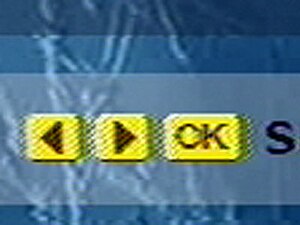
Back Cross-luminància Catalan Cross Luminance German Dot crawl Italian Dot crawl Portuguese Ползание точек Russian


Dot crawl (also known as chroma crawl or cross-luma)[1][2] is a visual defect of color analog video standards when signals are transmitted as composite video, as in terrestrial broadcast television. It consists of moving checkerboard patterns which appear along horizontal color transitions (vertical edges). It results from intermodulation or crosstalk between chrominance and luminance components of the signal, which are imperfectly multiplexed in the frequency domain.[2]
The term is more associated with the NTSC analog color TV system,[3] but is also present in PAL (see Chroma dots). Although the interference patterns are slightly different depending on the system used, they have the same cause and the same general principles apply.[4] A related effect, color bleed or rainbow artifacts, is discussed below.[5]
- ^ Cite error: The named reference
:0was invoked but never defined (see the help page). - ^ a b "Definition of dot crawl". PCMAG.
- ^ Lee, Ji Won; Lee, Hyun-Seung; Park, Rae-Hong; Kim, Sunghee (May 26, 2007). "Reduction of Dot Crawl and Rainbow Artifacts in the NTSC Video". IEEE Transactions on Consumer Electronics. 53 (2): 740–748. doi:10.1109/TCE.2007.381754. S2CID 24729029 – via IEEE Xplore.
- ^ Demtschyna, Michael. "Video Artefacts - Dot Crawl". www.michaeldvd.com.au.
- ^ Cite error: The named reference
:2was invoked but never defined (see the help page).
© MMXXIII Rich X Search. We shall prevail. All rights reserved. Rich X Search